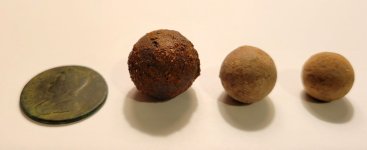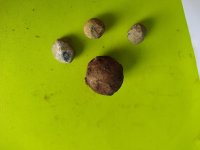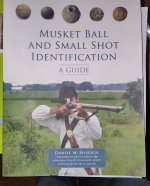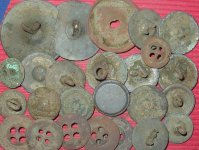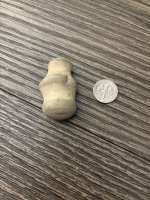- Mar 30, 2020
- 419
- 2,768
- Primary Interest:
- All Treasure Hunting
Last Sunday I found a 1.5 oz. cast iron ball nearly one inch in diameter. Hadn't found anything like this before although I have a growing collection of lead ball. After some thought and research I now believe it could have very well been part of my area's only Revolutionary War skirmish. I live on the south fork of eastern Long Island, NY not far from the site of the battle. During the Revolutionary War the British would anchor part of their war fleet in a nearby harbor, then sail into a garrison manned by loyalist militia for resupply. Basically they pillaged the area for food, fodder, lumber, firewood, and supplies. Population was mixed between Loyalists and Revolutionaries like much of Long Island, although many locals fled to CT after the fall of NYC. I've attached an article describing the conflict.

 classicnewyorkhistory.com
classicnewyorkhistory.com
It was successful for the Americans, mostly carried out as a stealth night sneak attack at bayonet point. But here's where the cannon shots came into play and maybe the source of my stray grape shot:
"At the waterfront, a British schooner of 12 guns opened fire on the Americans as they burned the boats. Twelve boats were destroyed. Six Loyalists were killed. The Americans did not suffer any casualties. The raiders grabbed 53 prisoners at the garrison and 37 at the wharf. The prisoners were evacuated to Connecticut."
The shot is definitely cast iron. The size of a grape, classic canister or case shot for the 12 pounder used by both land and sea forces with devastating effect. Back then they often referred it as "sand shot" and indeed you can see quartz silica sand sparkling on the shot exterior from the casting process. I can't figure out any other reason why someone would cut loose a cannon on some hilly farmer's fields.
This is what makes metal detecting relics so fun. There is the chase, the trophy, and then the research. It's a small piece but maybe the only one from a big event. The shot is pictured next to some of my other finds: a 1731 KGII halfpence, the iron shot, .75 Brown Bess, and .69 French Charleville.

The Battle of Sag Harbor In The War For Independence - ClassicNewYorkHistory.com
The Battle of Sag Harbor, also known as Meigs Raid, was a response to a British raid on a Patriot supply depot in Connecticut, during late April 1777.
 classicnewyorkhistory.com
classicnewyorkhistory.com
It was successful for the Americans, mostly carried out as a stealth night sneak attack at bayonet point. But here's where the cannon shots came into play and maybe the source of my stray grape shot:
"At the waterfront, a British schooner of 12 guns opened fire on the Americans as they burned the boats. Twelve boats were destroyed. Six Loyalists were killed. The Americans did not suffer any casualties. The raiders grabbed 53 prisoners at the garrison and 37 at the wharf. The prisoners were evacuated to Connecticut."
The shot is definitely cast iron. The size of a grape, classic canister or case shot for the 12 pounder used by both land and sea forces with devastating effect. Back then they often referred it as "sand shot" and indeed you can see quartz silica sand sparkling on the shot exterior from the casting process. I can't figure out any other reason why someone would cut loose a cannon on some hilly farmer's fields.
This is what makes metal detecting relics so fun. There is the chase, the trophy, and then the research. It's a small piece but maybe the only one from a big event. The shot is pictured next to some of my other finds: a 1731 KGII halfpence, the iron shot, .75 Brown Bess, and .69 French Charleville.



